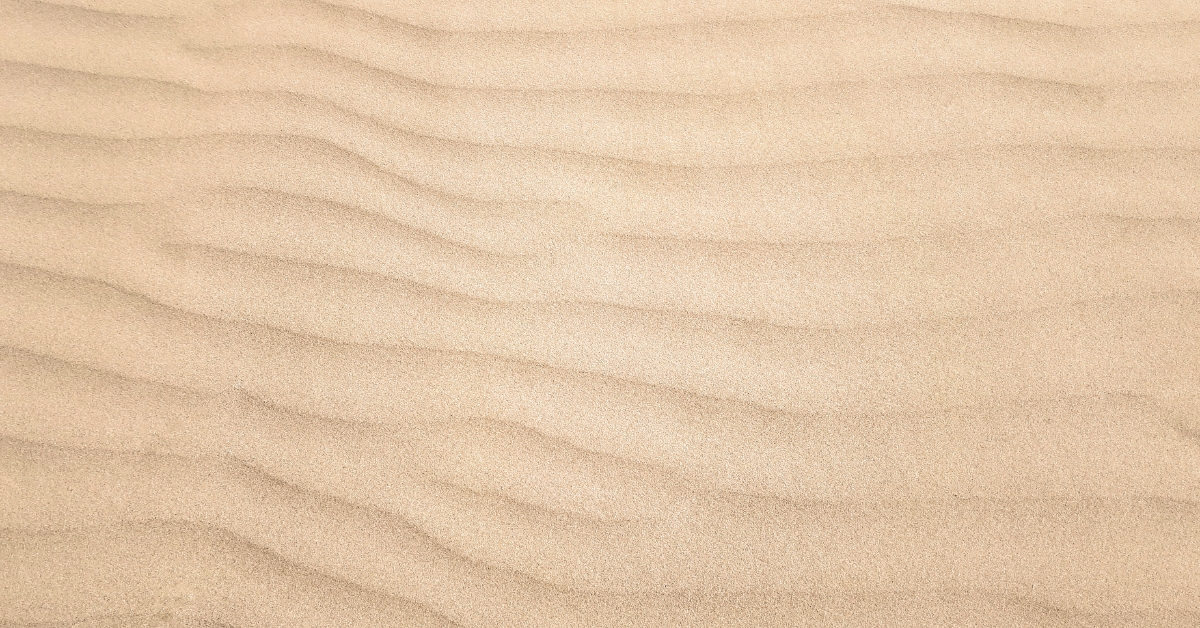On this particular morning, we arose at 5:30 AM, a notable increase in our recent sleep patterns. Despite this, urgency was in the air as we prepared to visit a temple near where our vessel had moored overnight.
During the previous night, our ship had anchored in Edfu, a modestly sized city located approximately 120 kilometers north of Aswan. Judging by the distinct sounds of the ship’s anchoring process, it seemed we arrived around 00:30.
Our primary goal for the day was to explore the Horus Temple, situated in the heart of Edfu. Our guide informed us that this temple is among the most exceptionally preserved in Egypt.
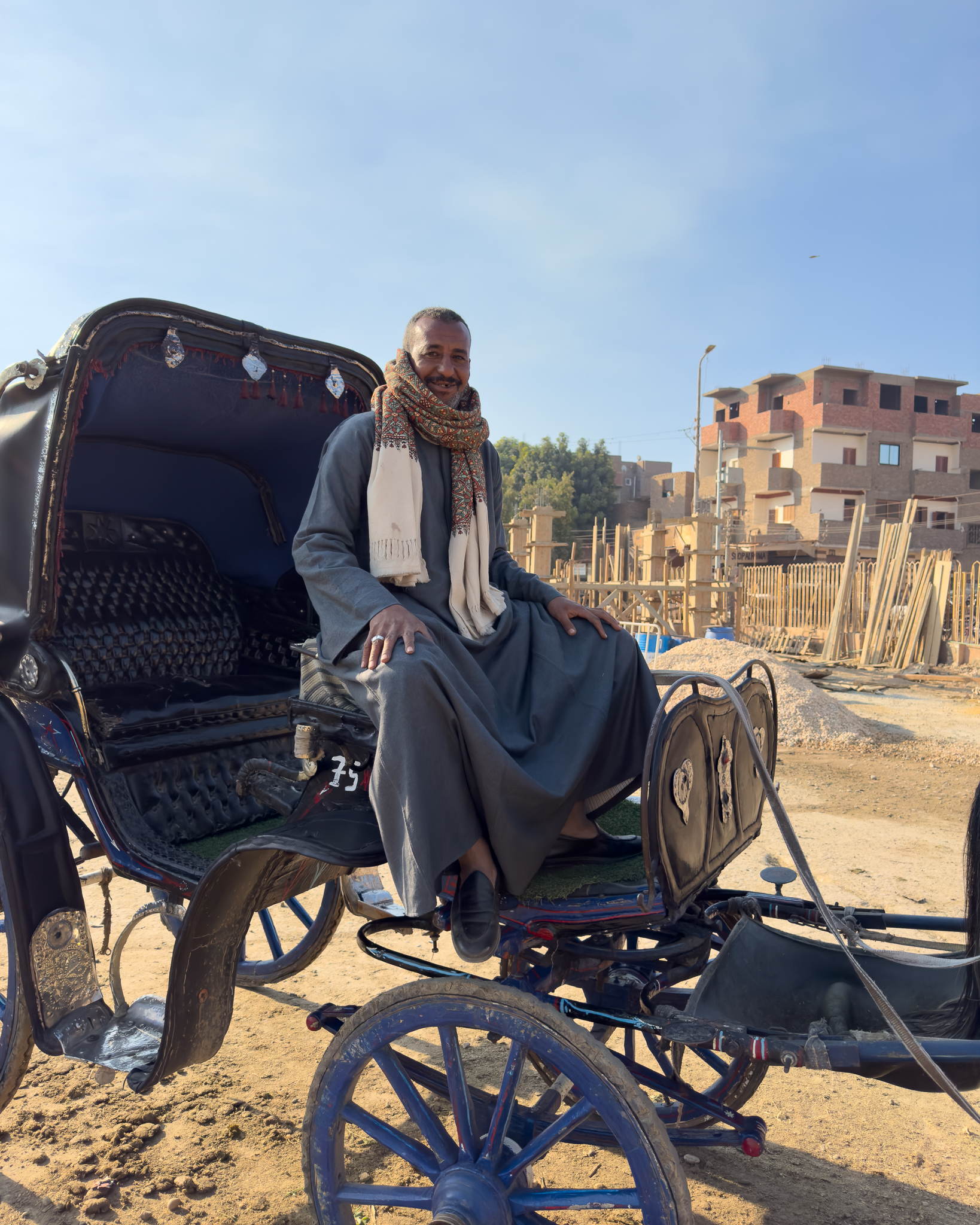
We disembarked from the boat at 7:00 AM, traveling by carriage in the crisp morning air. Accustomed to the warm climate of Douala, where temperatures rarely drop below 28°C with high humidity, the mere 8°C here was a stark contrast, evident from the visible breaths of our horses in the cold air.
Upon reaching the temple, many carriages were already unloading passengers. The sight of steam rising from the warm bodies of horses against the backlight was picturesque, yet I regretfully missed the opportunity to capture this moment in a photograph.
The Temple of Horus at Edfu
The Temple of Horus at Edfu, a monument of immense historical and architectural significance, stands as a testament to the grandeur of ancient Egyptian civilization. Located on the west bank of the Nile, this Greco-Roman temple dedicated to Horus, the falcon-headed god, is a brilliant representation of ancient Egyptian religious and architectural traditions.
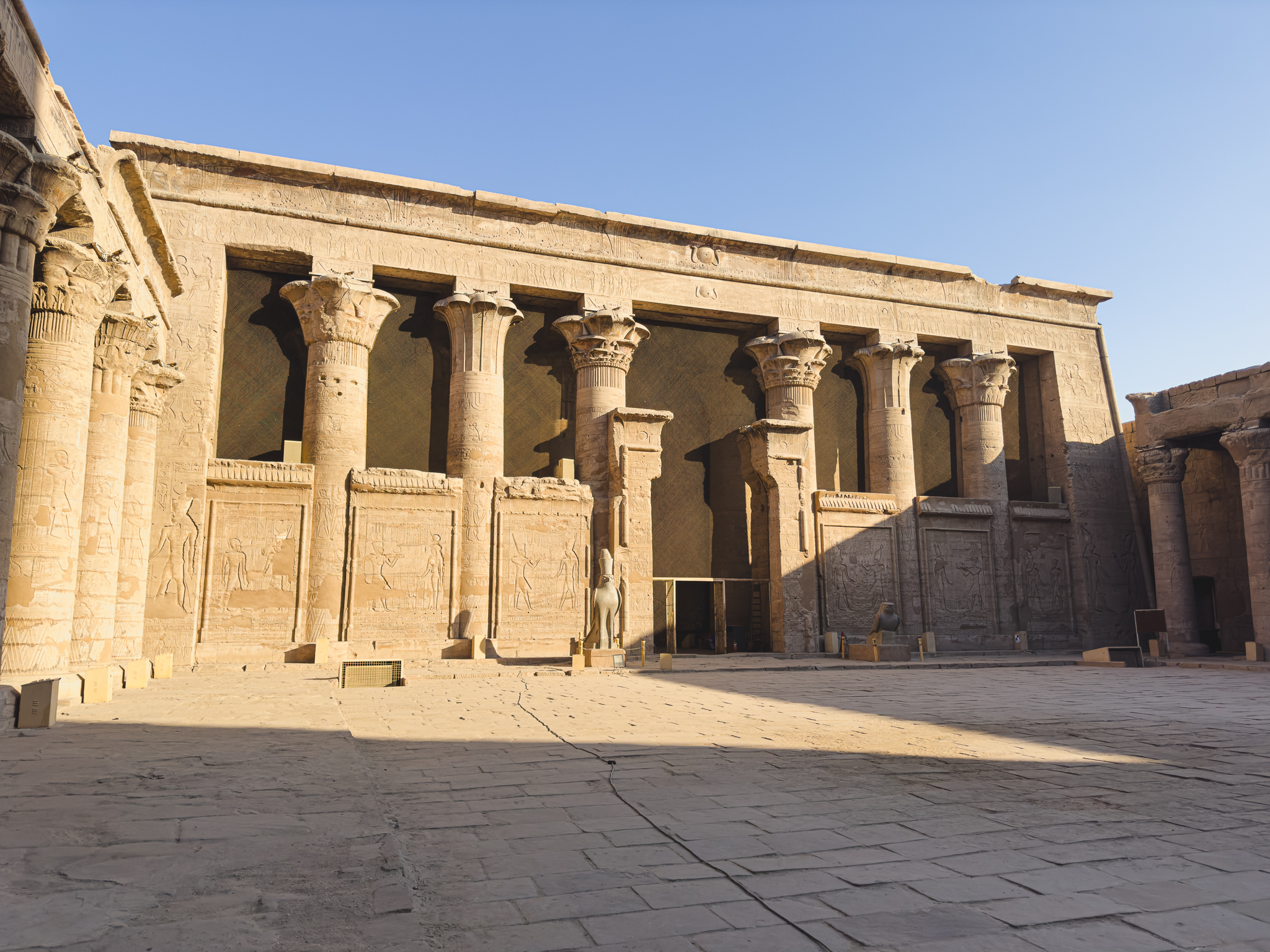
Constructed between 237 and 57 BC during the Ptolemaic period, the temple was built on the site of an earlier structure dedicated to Horus. The Ptolemaic era, following Alexander the Great’s conquest of Egypt, saw Greek rulers emulating and preserving Egyptian traditions and architectural styles. The Temple of Edfu, initiated under Ptolemy III and completed under Ptolemy XII, is one of the largest and best-preserved temples in Egypt, reflecting the prosperity of its time.
The temple’s location was believed by the ancient Egyptians to be the site of the epic battle between Horus and Seth. This mythological significance is mirrored in the temple’s elaborate carvings and inscriptions, which provide deep insights into the language, myths, and religious beliefs of the Hellenistic period in Egypt. The temple\’s walls are adorned with scenes depicting the age-old conflict between Horus and Seth, offering a rich narrative of Egyptian mythology.
Architecturally, the temple is a majestic structure with a massive entrance pylon adorned with relief carvings. It comprises a pillared hall, two transverse halls, and a barque sanctuary surrounded by chapels. An interesting element is the naos of Nectanebo II, a relic from an earlier building, preserved in the inner sanctuary.
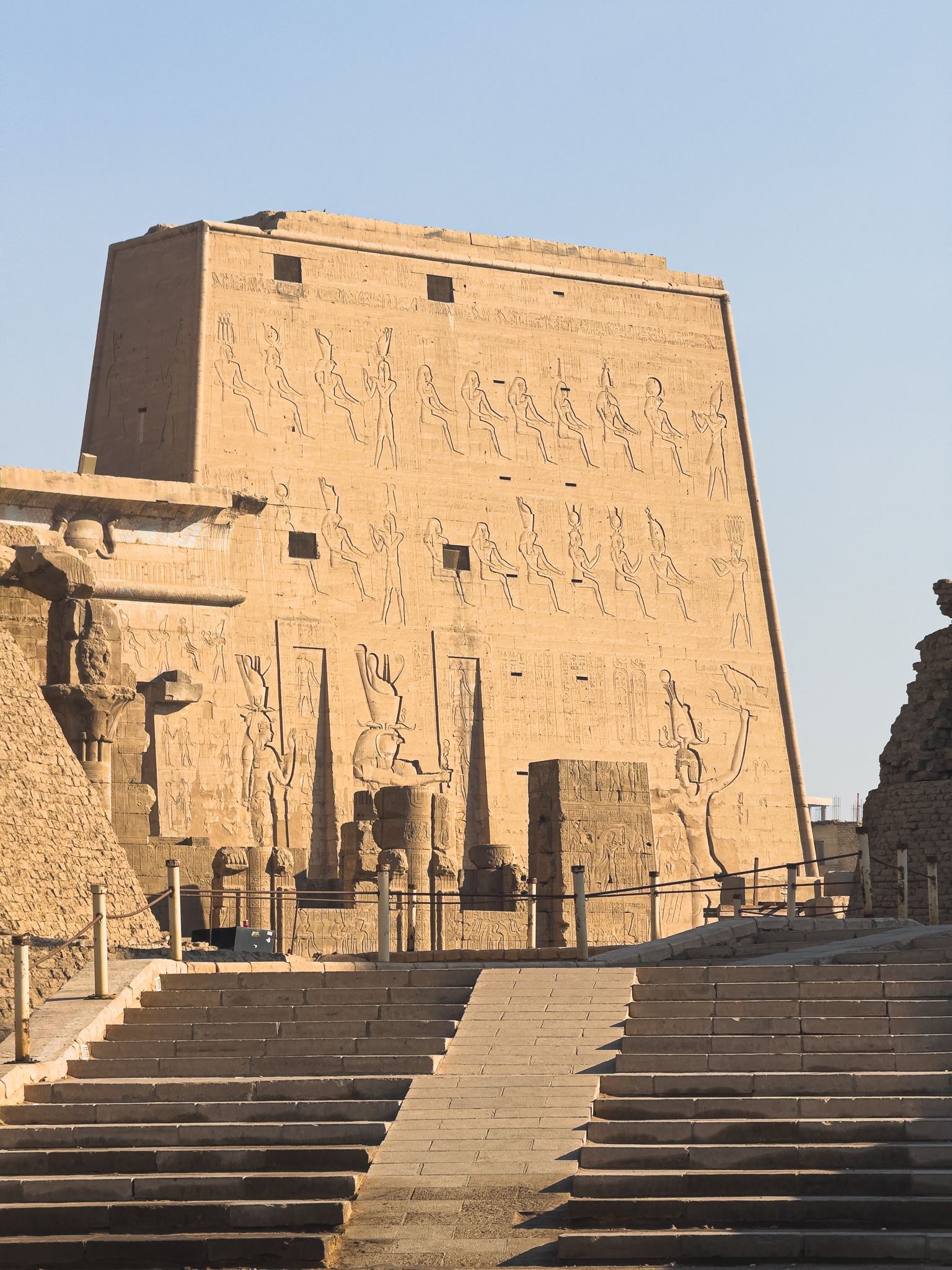
However, the temple’s history is not without turbulence. It fell into disuse as a religious monument after the Roman Emperor Theodosius I banned non-Christian worship in 391 AD. Subsequently, many of the temple’s reliefs were destroyed by Christian zealots, and the blackened ceiling of the hypostyle hall today is attributed to attempts at arson.
Over the centuries, the temple was buried under sand and river silt, with local inhabitants building homes over it. Only the upper reaches of the pylons were visible by 1798. The temple was uncovered in the mid-19th century by French Egyptologist Auguste Mariette, who initiated the excavation of the site.
Today, the Temple of Edfu is a key archaeological site and a significant tourist attraction in Egypt. Its nearly intact state offers a unique glimpse into ancient Egyptian temple architecture and religious practices. The temple complex, adorned with striking reliefs and housing Greco-Roman structures, continues to enchant visitors, contributing significantly to our understanding of ancient Egyptian beliefs and practices.
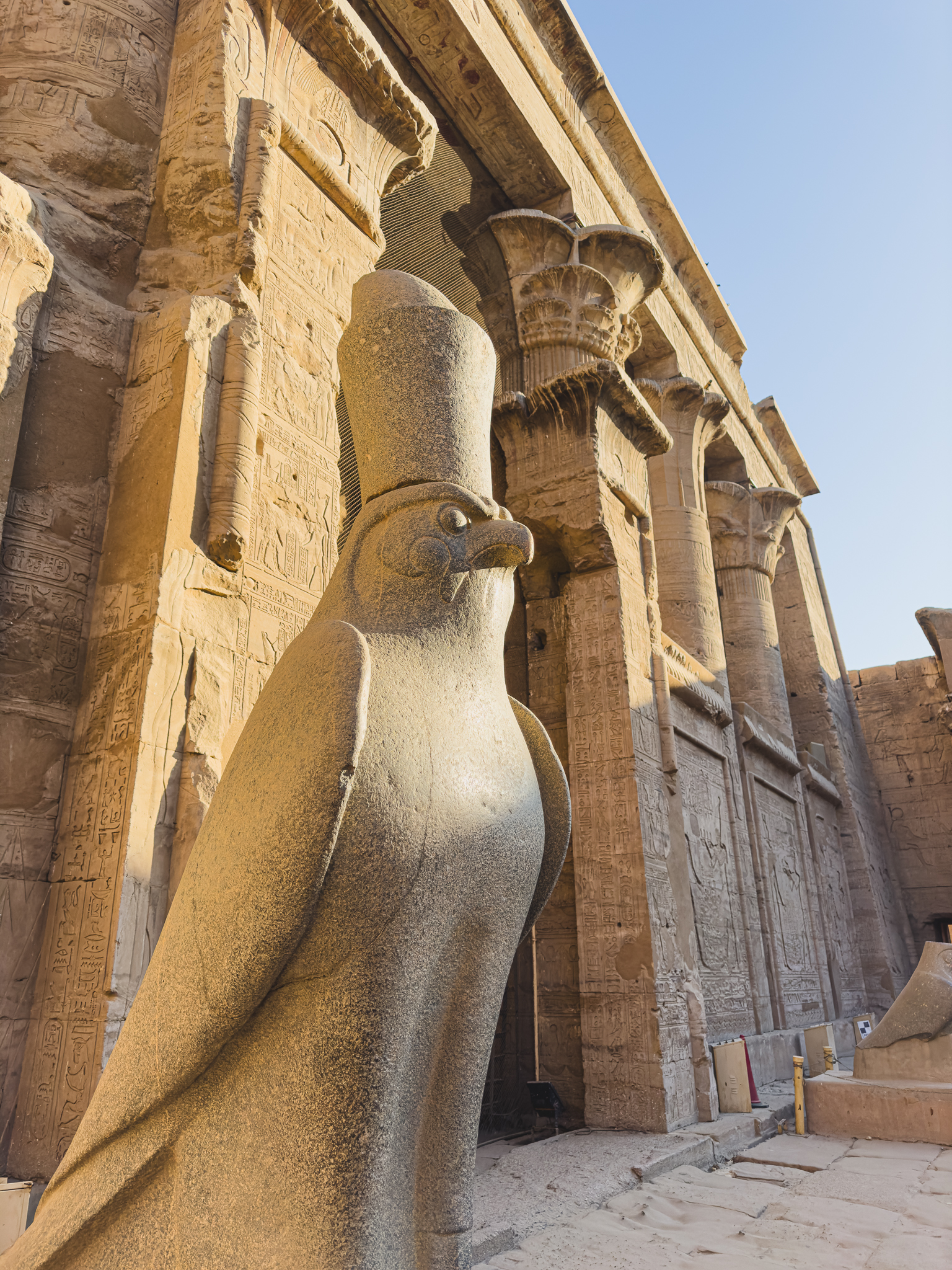
Our tour of the impressive temple commenced swiftly upon arrival. For two hours, we immersed ourselves in the intricate details and rich history relayed by our guide. It was somewhat disappointing that time constraints prevented us from exploring Edfu city further, which would have offered a more authentic glimpse into Egyptian daily life and culture. While our journey has been splendid thus far, I find myself yearning for experiences beyond the typical tourist attractions, longing to connect more intimately with the real Egypt.
The remainder of the day aboard our boat was relatively tranquil yet passed swiftly. I dedicated my time to managing the technical aspects of my photography and blog, while my wife focused on her video and storytelling projects. We enjoyed the serene views of the Nile from our cabin window.
Around 13:00, as we awaited passage through the Esna lock, we were entertained by vendors in small boats, selling tunics and textiles. Negotiating prices from our second-floor window was an amusing and lively exchange, reminiscent of my childhood experiences in Turkey and Iran’s bazaars.
Post-negotiations, lunch was served on the upper deck, allowing us to savor both the cuisine and the surrounding landscape. We lingered there for an hour, waiting for the Esna lock to permit our vessel’s passage.
The impressive Esna lock
Nestled along the majestic Nile River lies a marvel of engineering and a testament to human ingenuity: the Esna Lock. This crucial structure, more than just a feat of engineering, symbolizes the harmonious blend of nature and technology, serving as a lifeline for the communities along the river’s banks.
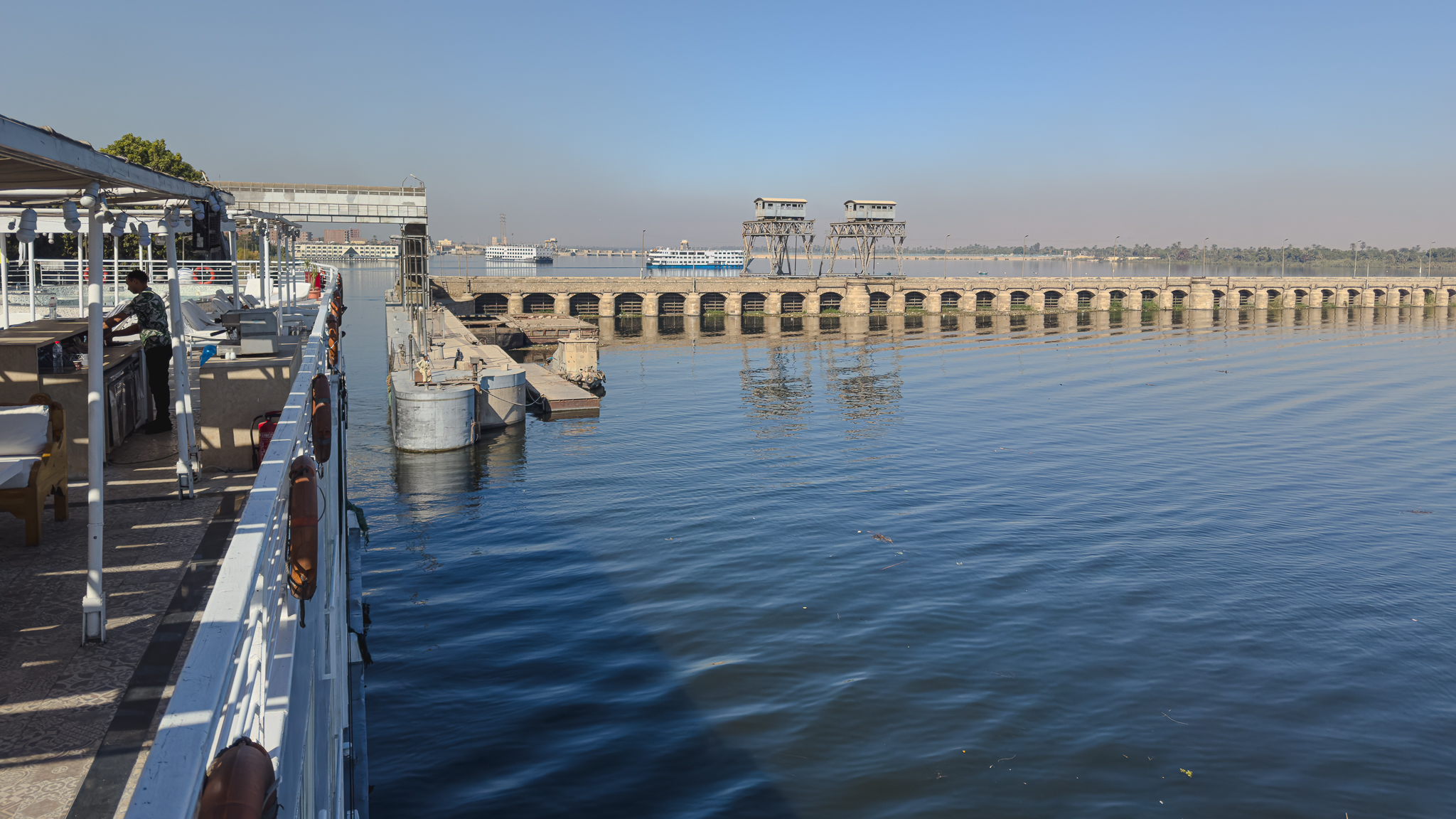
At the heart of this engineering wonder is its core function – controlling the mighty Nile’s flow. The lock, essential for both agricultural prosperity and efficient navigation, elegantly manages the river\’s waters, preserving them for irrigation, thus ensuring the fertility of the lands that have depended on the Nile since ancient times.
Constructed in the early 20th century, with an investment reflecting its importance, a staggering £1,000,000 at the time, the Esna Lock was inaugurated with much fanfare by the Khedive. Comprising two robust barrages across the Nile, it’s not just a barrier but a gateway, connecting the upper and lower stretches of this life-giving river.
The lock’s location, places it at a crossroads of cultures and histories. Boats journeying between Edfu and Luxor, carrying both locals and wide-eyed travelers, must pass through Esna’s gates. This passage is more than a mere navigational necessity; it is a journey through the very heartbeat of the Nile.
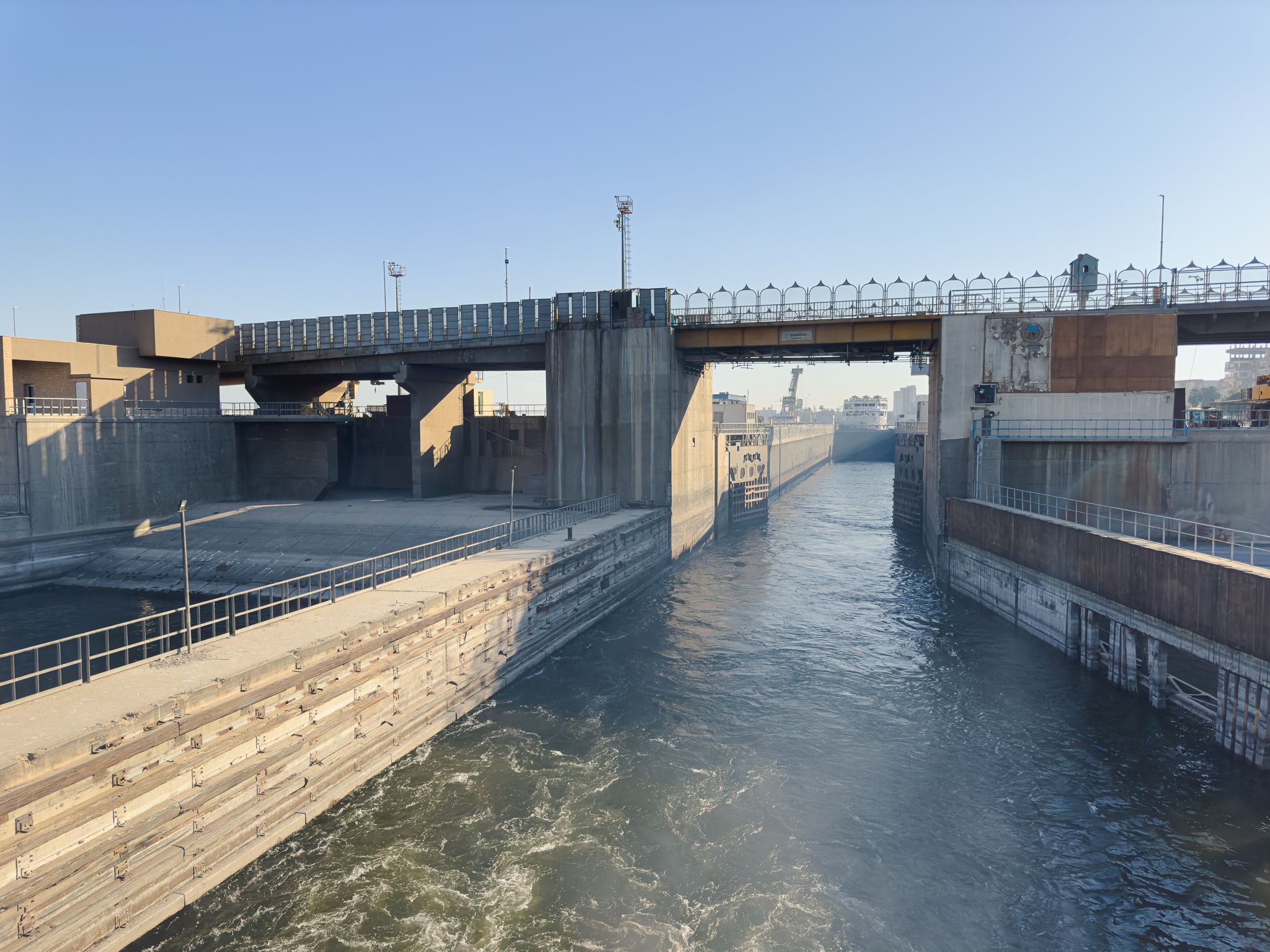
For travelers, the experience of passing through the Esna Lock is an immersion into the rhythm of the Nile.
After witnessing the impressive opening of the massive metallic lock gates, I returned to my room to continue work on my website, a task far more time-consuming than one might assume.
The evening brought a belly dance performance on board, celebrating our impending arrival in Luxor and marking the conclusion of our cruise from Aswan to Luxor. Tomorrow promises an early start and an intensive day exploring ancient Egyptian history before we journey several hours to our next destination, the Hurghada beach resort. The day’s intensity might preclude an evening post, but I shall endeavor to share our experiences as soon as possible.

